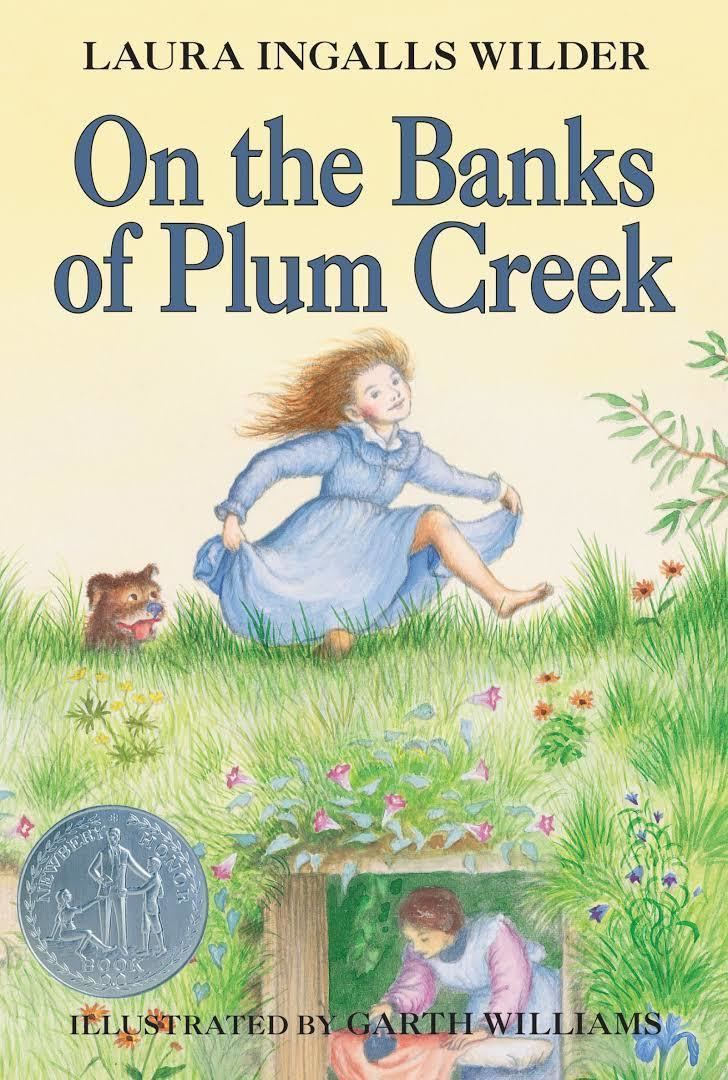8.4 /10 1 Votes8.4
Country United States Publisher Harper & Brothers Originally published 1937 Page count 239 | 4.2/5 Goodreads Series Little House Publication date October 20, 1937 Pages 239; 338 pp. | |||||||||||||||||||||||||||||||||
 | ||||||||||||||||||||||||||||||||||
Similar Laura Ingalls Wilder books, Little House on the Prairie books, Western books | ||||||||||||||||||||||||||||||||||
Chapter 1 the door in the ground
On the Banks of Plum Creek is an autobiographical children's novel written by Laura Ingalls Wilder and published in 1937, the fourth of nine books in her Little House series. It is based on a few years of her childhood when the Ingalls family lived at Plum Creek near Walnut Grove, Minnesota, during the 1870s. The original dustjacket proclaimed, "The true story of an American pioneer family by the author of Little House in the Big Woods".
Contents
Plum Creek was a Newbery Honor book in 1938, as were the next four Little House books through 1944.
Plot summary
Having left their little house on the Kansas prairie, the Ingalls family travels by covered wagon to Minnesota and settles in a dugout on the banks of Plum Creek. Pa trades his horses Pet and Patty to the property owner (a man named Hanson, who wants to go west) for the land and crops. He later gets two new horses as Christmas presents for the family, which Laura and her sister Mary name "Sam" and "David". Pa soon builds a new, above-ground, wooden house for the family, trusting that their first crop of wheat will pay for the lumber and materials.
Now that they live near a town, Laura and Mary go to school for the first time. There they make friends, but also meet the town storekeeper's daughter, Nellie Oleson, who makes fun of Laura and Mary for being "country girls." Laura and Mary attend a party at the Olesons' home, and Ma has Laura and Mary invite all the girls (including Nellie) to a party at their house to reciprocate.
The family goes through very hard times when grasshoppers (actually Rocky Mountain Locusts) decimate the much-anticipated wheat crop, and lay so many eggs that there is no hope of a crop the following year. For two harvest seasons, Pa is forced to walk three hundred miles east to find work on farms that escaped the grasshopper plague.
The book ends with Laura's father returning safely to the house after becoming lost near their home during a severe four-day blizzard. Laura is portrayed in this book as being seven to nine years old.
Walnut Grove
Although Plum Creek (in Redwood County, Minnesota) is near the town of Walnut Grove, the name of the town is not mentioned in the book.
Reception
Virginia Kirkus had handled Ingalls Wilder's debut novel Little House in the Big Woods for Harper & Brothers as its children's book editor from 1926 to 1932. In Kirkus Reviews, her semi-monthly bulletin from 1933, she awarded On the Banks of Plum Creek a starred review (as she did its one predecessor and two successors, books 3 to 6 and no others). "If anything, it is better than her enchanting Little House in the Big Woods. ... Laura is always in trouble, but a staunch young person when brought to the text. It is perfect Americana."
On the Banks of Plum Creek was the first of five Newbery Honor books for Ingalls Wilder, books 4 to 8 in the series.
In 1997, On the Banks of Plum Creek was challenged by two parents from Winnipeg, Canada who took issue with the portrayal of Native Americans in the book and wanted a local school division to pull the book from its libraries and lessons. The word "Indian", referring to Native Americans, appears 12 times in the book, most of them dealing with the Ingalls family's time in Indian Territory. However, at one point Mary tells Laura to keep her sunbonnet on or "You'll be as brown as an Indian, and what will the town girls think of us?" Laura also says, "I wish I was an Indian and never had to wear clothes!" The complaint was eventually withdrawn.
Publication
After failing at farming in the Dakotas in the 1890s—drought, illness, and fire contributing—Laura moved with her husband, Almanzo, and young daughter, Rose, to the Ozarks in Missouri. Decades later, Wilder, who had been writing columns and editing for a regional farm newspaper, was encouraged by her daughter Rose, a published author whose last name was now Lane, to write a memoir of growing up on the frontier for national serialization—mostly for financial reasons.
Wilder wrote Pioneer Girl, an adult version of her autobiography, before she wrote her children’s books. When Pioneer Girl proved unsellable to publishers, Wilder’s daughter, Rose Wilder Lane, suggested they rethink it, leading to the Little House series. Some of the real-life events were either softened or taken out entirely for a younger audience.
